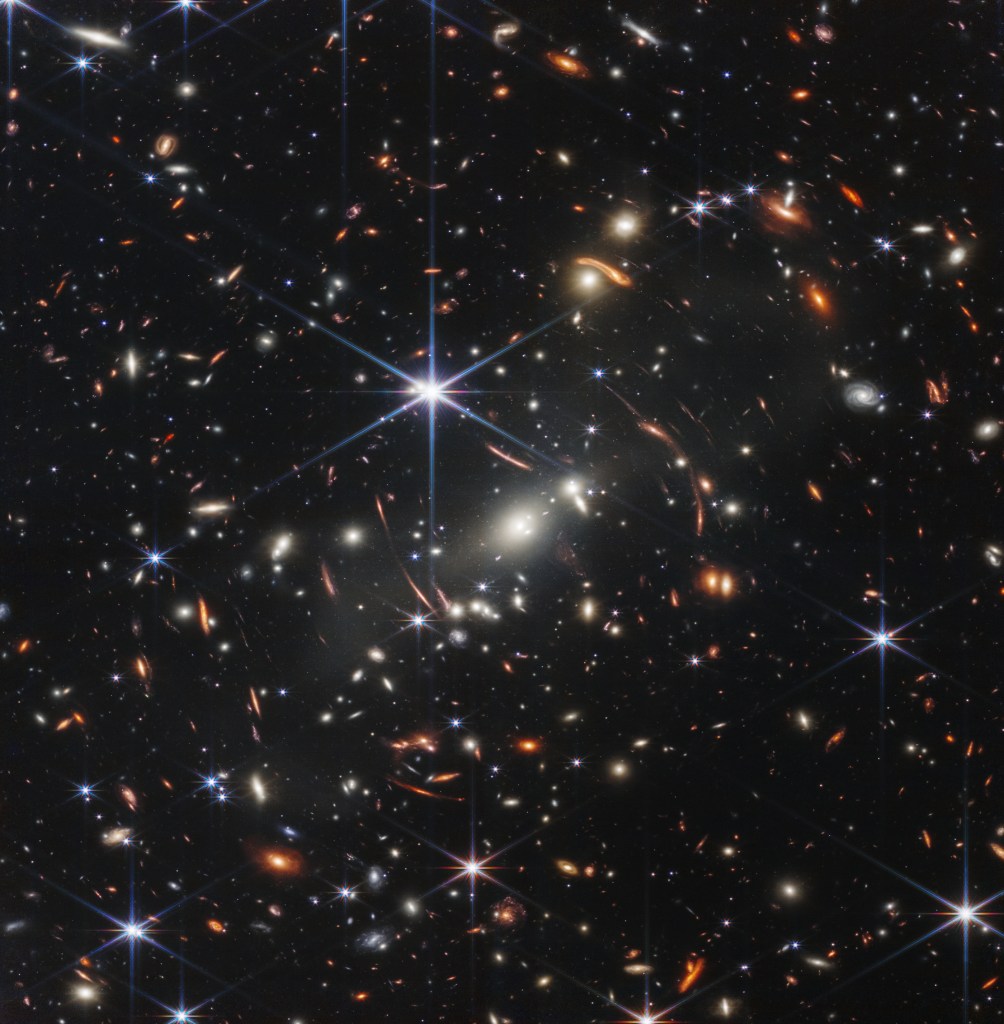Scientists have discovered new insights about the first stars and galaxies that ever existed in the universe, which have never been directly spotted by humans, by searching for an elusive signal at the edge of space and time, reports a new study.
For decades, astronomers have been on a quest to capture a clear glimpse of these primordial stars and galaxies, which probably burst into existence about 100 to 200 million years after the Big Bang. A new generation of sophisticated observatories, including the James Webb Space Telescope (JWST), may finally bring these ancient objects into view in the coming years, which would enable scientists to address a host of unresolved questions about the formation and evolution of the weird universe that surrounds us today.
Videos by VICE
In the meantime, though, there are other clever ways to indirectly probe this distant frontier. For instance, scientists have long searched the early universe for radio emissions from atomic hydrogen at wavelengths measuring 21 centimeters, which is known as the 21-centimeter signal. Because this ancient atomic hydrogen was ionized by the light of the first stars, scientists can look for clues about these initial stars and galaxies by examining the changes embedded into the 21-centimeter signal from this distant epoch.
Now, scientists led by Harry Bevins, an astrophysicist at the Kavli Institute for Cosmology at the University of Cambridge, report that they did not detect the signal in a recent search for used an ultra-sensitive radio telescope to search for the signal in an era when the universe was just 200 million years old.
Though a non-detection may not seem like big news, it actually allows preliminary “constraints on astrophysics at cosmic dawn to be derived,” including the likely masses and brightness of the universe’s first galaxies, according to the team’s study, which was published on Monday in Nature Astronomy.
“This is the first time we have been able to constrain the masses of star-forming galaxies and how efficient they were at producing stars during this period of cosmic history,” said Bevins in an email to Motherboard. “Even though these constraints are currently weak it begins to open up a window to the infant universe and it will allow for more targeted searches for the signature from these galaxies in the future.”
Bevins and his colleagues set out to hunt for the 21-centimeter signal using a unique instrument called the SARAS 3 Radio Telescope, which collects observations from lakes across southern India. The team noted that “the experiment is the first global 21-cm experiment of its kind to take observations while floating on a body of water, which is expected to improve the total efficiency of the antenna,” according to the study.
A previous report of the 21-centimeter signal captured by another instrument, called EDGES, had suggested that the light from the first stars and galaxies was much stronger than expected, challenging our models of the early universe. The new non-detection challenges those findings and “brings the focus back to the more conventional astrophysical scenarios,” according to the study. In addition,
Bevins and his colleagues were also able to make some rough estimates about the properties of these early galaxies. For instance, the team said that these galaxies were not likely to be 1,000 times brighter, or greater, than galaxies that exist today, and that they probably weighed in at between 440,000 and 11,000,000 times the mass of the Sun.
“The work is a proof of concept and demonstrates the potential power of the 21-cm signal to reveal the first galaxies,” Bevins said. “Currently the field is focused on taking more observations and improving the constraints. The researchers in Cambridge are all involved in the REACH experiment, which is a similar type of experiment to SARAS3, and we hope to take data with this instrument in the coming year.”
“The REACH collaboration is relying on similar analysis techniques to those used in this paper but with a more complete model of the radio sky which it is hoped will improve our knowledge of the first galaxies,” he continued. “There is also potential for further observations with SARAS3 and more data from that instrument could itself improve limits on the properties of the first galaxies.”
These new experiments are opening a new window into this mysterious era of first starlight, which marked a major transition that sowed the cosmic seeds of the universe we live in today. For now, scientists are working with indirect ways of probing this important time, but soon JWST and other instruments may glimpse these ancient wonders at last.
“We are currently in a position where we can say what the first galaxies were not like but we would very much like to be in a position to say what they were like in the coming years,” Bevins concluded.
More
From VICE
-

Illustration by Reesa -

Illustration by Reesa -

Scientists measure the energy needed to excite the thorium-229 nucleus, which is the core of a future nuclear clock. Chuankun Zhang/JILA. -

Illustration by Reesa.
